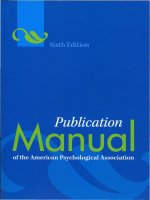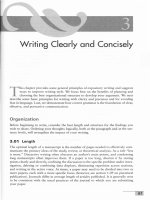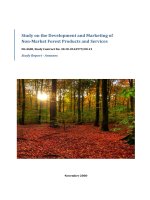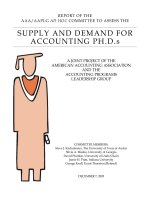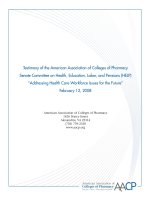- Trang chủ >>
- Khoa Học Tự Nhiên >>
- Vật lý
goddess of the market ayn rand and the american right oct 2009
Bạn đang xem bản rút gọn của tài liệu. Xem và tải ngay bản đầy đủ của tài liệu tại đây (1.55 MB, 380 trang )
$
GODDESS OF THE MARKET
This page intentionally left blank
GODDESS OF THE MARKET
Ayn Rand and the American Right
Jennifer Burns
1
2009
1
Oxford University Press
Oxford University Press, Inc., publishes works that further
Oxford University’s objective of excellence
in research, scholarship, and education.
Oxford New York
Auckland Cape Town Dar es Salaam Hong Kong Karachi
Kuala Lumpur Madrid Melbourne Mexico City Nairobi
New Delhi Shanghai Taipei Toronto
With offi ces in
Argentina Austria Brazil Chile Czech Republic France Greece
Guatemala Hungary Italy Japan Poland Portugal Singapore
South Korea Switzerland Thailand Turkey Ukraine Vietnam
Copyright © 2009 by Oxford University Press, Inc.
Published by Oxford University Press, Inc.
198 Madison Avenue, New York, New York 10016
www.oup.com
Oxford is a registered trademark of Oxford University Press.
All rights reserved. No part of this publication may be reproduced,
stored in a retrieval system, or transmitted, in any form or by any means,
electronic, mechanical, photocopying, recording, or otherwise,
without the prior permission of Oxford University Press.
Library of Congress Cataloging-in-Publication Data
Burns, Jennifer, 1975–
Goddess of the market : Ayn Rand and the American Right / Jennifer Burns.
p. cm.
Includes bibliographical references and index.
ISBN 978-0-19-532487-7
1. Rand, Ayn. 2. Rand, Ayn—Political and social views.
3. Rand, Ayn—Criticism and interpretation. 4. Novelists, American—20th
century—Biography. 5. Women novelists, American—Biography.
6. Philosophers—United States—Biography.
7. Political culture—United States—History—20th century.
8. Right and left (Political science)—History—20th century.
9. United States—Politics and government—1945–1989. I. Title.
PS 3535.A547Z587 2009
813'.52—dc22 2009010763
135798642
Printed in the United States of America
on acid-free paper
TO MY FATHER
This page intentionally left blank
CONTENTS
Introduction 1
PART I: THE EDUCATION OF AYN RAND,
1905–1943
1. From Russia to Roosevelt 9
2. Individualists of the World, Unite! 39
3. A New Credo of Freedom 67
PART II: FROM NOVELIST TO PHILOSOPHER,
1944–1957
4. The Real Root of Evil 99
5. A Round Universe 133
PART III: WHO IS JOHN GALT? 1957–1968
6. Big Sister Is Watching You 165
7. Radicals for Capitalism 189
8. Love Is Exception Making 214
PART IV: LEGACIES
9. It Usually Begins with Ayn Rand 247
Epilogue: Ayn Rand in American Memory 279
Acknowledgments 287
Essay on Sources 291
Notes 299
Bibliography 345
Index 361
This page intentionally left blank
$
GODDESS OF THE MARKET
This page intentionally left blank
1
Introduction
$
her eyes were what everyone noticed fi rst. Dark and widely set,
they dominated her plain, square face. Her “glare would wilt a cac-
tus,” declared Newsweek magazine, but to Ayn Rand’s admirers, her eyes
projected clairvoyance, insight, profundity. “When she looked into my
eyes, she looked into my soul, and I felt she saw me,” remembered one
acquaintance. Readers of her books had the same feeling. Rand’s words
could penetrate to the core, stirring secret selves and masked dreams.
A graduate student in psychology told her, “Your novels have had a pro-
found infl uence on my life. It was like being reborn. . . . What was really
amazing is that I don’t remember ever having read a book from cover to
cover. Now, I’m just the opposite. I’m always reading. I can’t seem to get
enough knowledge.” Sometimes Rand provoked an adverse reaction. The
libertarian theorist Roy Childs was so disturbed by The Fountainhead’s
atheism that he burned the book after fi nishing it. Childs soon recon-
sidered and became a serious student and vigorous critic of Rand. Her
works launched him, as they did so many others, on an intellectual jour-
ney that lasted a lifetime.
1
Although Rand celebrated the life of the mind, her harshest critics were
intellectuals, members of the social class into which she placed herself.
Rand was a favorite target of prominent writers and critics on both the
left and the right, drawing fi re from Sidney Hook, Whittaker Chambers,
Susan Brownmiller, and William F. Buckley Jr. She gave as good as she
got, calling her fellow intellectuals “frightened zombies” and “witch doc-
tors.”
2
Ideas were the only thing that truly mattered, she believed, both in
a person’s life and in the course of history. “What are your premises?” was
her favorite opening question when she met someone new.
Today, more than twenty years after her death, Rand remains
shrouded in both controversy and myth. The sales of her books are
INTRODUCTION
2
extraordinary. In 2008 alone combined sales of her novels Atlas Shrugged,
The Fountainhead, We the Living, and Anthem topped eight hundred
thousand, an astonishing fi gure for books published more than fi fty
years ago.
3
A host of advocacy organizations promote her work, and
rumors swirl about a major motion picture based on Atlas Shrugged.
The blogosphere hums with acrimonious debate about her novels and
philosophy. In many ways, Rand is a more active presence in American
culture now than she was during her lifetime.
Because of this very longevity, Rand has become detached from her
historical context. Along with her most avid fans, she saw herself as a
genius who transcended time. Like her creation Howard Roark, Rand
believed, “I inherit nothing. I stand at the end of no tradition. I may,
perhaps, stand at the beginning of one.” She made grandiose claims
for Objectivism, her fully integrated philosophical system, telling the
journalist Mike Wallace, “If anyone can pick a rational fl aw in my phi-
losophy, I will be delighted to acknowledge him and I will learn some-
thing from him.” Until then, Rand asserted, she was “the most creative
thinker alive.”
4
The only philosopher she acknowledged as an infl uence
was Aristotle. Beyond his works, Rand insisted that she was unaffected
by external infl uences or ideas. According to Rand and her latter-day
followers, Objectivism sprang, Athena-like, fully formed from the brow
of its creator.
Commentary on Rand has done little to dispel this impression.
Because of her extreme political views and the nearly universal consen-
sus among literary critics that she is a bad writer, few who are not com-
mitted Objectivists have taken Rand seriously. Unlike other novelists of
her stature, until now Rand has not been the subject of a full-length
biography. Her life and work have been described instead by her former
friends, enemies, and students. Despite her emphasis on integration,
most of the books published about Rand have been essay collections
rather than large-scale works that develop a sustained interpretation of
her importance.
This book fi rmly locates Rand within the tumultuous American cen-
tury that her life spanned. Rand’s defense of individualism, celebration of
capitalism, and controversial morality of selfi shness can be understood
only against the backdrop of her historical moment. All sprang from
her early life experiences in Communist Russia and became the most
INTRODUCTION
3
powerful and deeply enduring of her messages. What Rand confronted
in her work was a basic human dilemma: the failure of good intentions.
Her indictment of altruism, social welfare, and service to others sprang
from her belief that these ideals underlay Communism, Nazism, and
the wars that wracked the century. Rand’s solution, characteristically,
was extreme: to eliminate all virtues that could possibly be used in the
service of totalitarianism. It was also simplistic. If Rand’s great strength
as a thinker was to grasp interrelated underlying principles and weave
them into an impenetrable logical edifi ce, it was also her great weakness.
In her effort to fi nd a unifying cause for all the trauma and bloodshed
of the twentieth century, Rand was attempting the impossible. But it
was this deadly serious quest that animated all of her writing. Rand was
among the fi rst to identify the problem of the modern state’s often ter-
rifying power and make it an issue of popular concern.
She was also one of the fi rst American writers to celebrate the creative
possibilities of modern capitalism and to emphasize the economic value
of independent thought. In a time when leading intellectuals assumed
that large corporations would continue to dominate economic life, shap-
ing their employees into soulless organization men, Rand clung to the
vision of the independent entrepreneur. Though it seemed anachronis-
tic at fi rst, her vision has resonated with the knowledge workers of the
new economy, who see themselves as strategic operators in a constantly
changing economic landscape. Rand has earned the unending devotion
of capitalists large and small by treating business as an honorable calling
that can engage the deepest capacities of the human spirit.
At the same time, Rand advanced a deeply negative portrait of gov-
ernment action. In her work, the state is always a destroyer, acting to
frustrate and inhibit the natural ingenuity and drive of individuals. It is
this chiaroscuro of light and dark—virtuous individuals battling a vil-
lainous state—that makes her compelling to some readers and odious
to others. Though Americans turned to their government for aid, suc-
cor, and redress of grievances ever more frequently during the twentieth
century, they did so with doubts, fears, and misgivings, all of which Rand
cast into stark relief in her fi ction. Her work sounded anew the tradi-
tional American suspicion of centralized authority, and helped inspire
a broad intellectual movement that challenged the liberal welfare state
and proclaimed the desirability of free markets.
INTRODUCTION
4
Goddess of the Market focuses on Rand’s contributions as a political
philosopher, for it is here that she has exerted her greatest infl uence.
Rand’s Romantic Realism has not changed American literature, nor has
Objectivism penetrated far into the philosophy profession. She does,
however, remain a veritable institution within the American right. Atlas
Shrugged is still devoured by eager young conservatives, cited by politi-
cal candidates, and promoted by corporate tycoons. Critics who dismiss
Rand as a shallow thinker appealing only to adolescents miss her sig-
nifi cance altogether. For over half a century Rand has been the ultimate
gateway drug to life on the right.
The story of Ayn Rand is also the story of libertarianism, conser-
vatism, and Objectivism, the three schools of thought that intersected
most prominently with her life. These terms are neither fi rmly defi ned
nor mutually exclusive, and their meaning shifted considerably during
the period of time covered in this book. Whether I identify Rand or her
admirers as libertarian, conservative, or Objectivist varies by the con-
text, and my interchangeable use of these words is not intended to col-
lapse the distinctions between each. Rand jealously guarded the word
Objectivist when she was alive, but I use the term loosely to encompass
a range of persons who identifi ed Rand as an important infl uence on
their thought.
I was fortunate to begin this project with two happy coincidences: the
opening of Rand’s personal papers held at the Ayn Rand Archives and
the beginning of a wave of scholarship on the American right. Work in
Rand’s personal papers has enabled me to sift through the many biased
and contradictory accounts of her life and create a more balanced picture
of Rand as a thinker and a human being. Using newly available docu-
mentary material I revisit key episodes in Rand’s dramatic life, including
her early years in Russia and the secret affair with a young acolyte that
shaped her mature career. I am less concerned with judgment than with
analysis, a choice Rand would certainly condemn. Though I was granted
full access to her papers by the Ayn Rand Institute, I am not an Objectivist
and have never been affi liated with any group dedicated to Rand’s work.
I approach her instead as a student and a critic of American thought.
New historical scholarship has helped me situate Rand within the
broader intellectual and political movements that have transformed
America since the days of the New Deal. At once a novelist and a
INTRODUCTION
5
philosopher, a moralist and a political theorist, a critic and an ideologue,
Rand is diffi cult to categorize. She produced novels, plays, screenplays,
cultural criticism, philosophic essays, political tracts, and commen-
tary on current events. Almost everything she wrote was unfashion-
able. When artists embraced realism and modernism, she championed
Romanticism. Implacably opposed to pragmatism, existentialism, and
Freudian psychology, she offered instead Objectivism, an absolutist
philosophical system that insisted on the primacy of reason and the
existence of a knowable, objective reality. Though she was out of fash-
ion, Rand was not without a tradition or a community. Rather than a
lonely genius, she was a deeply engaged thinker, embedded in multiple
networks of friends and foes, always driven relentlessly to comment
upon and condemn the tide of events that fl owed around her.
This book seeks to excavate a hidden Rand, one far more complex
and contradictory than her public persona suggests. Although she
preached unfettered individualism, the story I tell is one of Rand in rela-
tionship, both with the signifi cant fi gures of her life and with the wider
world, which appeared to her alternately as implacably hostile and full
of limitless possibility. This approach helps reconcile the tensions that
plagued Rand’s life and work. The most obvious contradiction lies on
the surface: Rand was a rationalist philosopher who wrote romantic fi c-
tion. For all her fealty to reason, Rand was a woman subject to power-
ful, even overwhelming emotions. Her novels indulged Rand’s desire for
adventure, beauty, and excitement, while Objectivism helped her frame,
master, and explain her experiences in the world. Her dual career as a
novelist and a philosopher let Rand express both her deep-seated need
for control and her genuine belief in individualism and independence.
Despite Rand’s lifelong interest in current events, the escapist plea-
sures of fi ction tugged always at the edges of her mind. When she
stopped writing novels she continued to live in the imaginary worlds
she had created, fi nding her characters as real and meaningful as the
people she spent time with every day. Over time she retreated ever fur-
ther into a universe of her own creation, joined there by a tight band
of intimates who acknowledged her as their chosen leader. At fi rst this
closed world offered Rand the refuge she sought when her work was
blasted by critics, who were often unfairly harsh and personal in their
attacks. But Objectivism as a philosophy left no room for elaboration,
INTRODUCTION
6
extension, or interpretation, and as a social world it excluded growth,
change, or development. As a younger Rand might have predicted, a
system so oppressive to individual variety had not long to prosper. A
woman who tried to nurture herself exclusively on ideas, Rand would
live and die subject to the dynamics of her own philosophy. The clash
between her romantic and rational sides makes this not a tale of tri-
umph, but a tragedy of sorts.
PART I
The Education of Ayn Rand, 1905–1943
Alisa Rosenbaum, Leningrad, Russia, 1925.
This page intentionally left blank
9
CHAPTER ONE
From Russia to Roosevelt
$
it was a wintry day in 1918 when the Red Guard pounded on the
door of Zinovy Rosenbaum’s chemistry shop. The guards bore a
seal of the State of Russia, which they nailed upon the door, signaling
that it had been seized in the name of the people. Zinovy could at least
be thankful the mad whirl of revolution had taken only his property, not
his life. But his oldest daughter, Alisa, twelve at the time, burned with
indignation. The shop was her father’s; he had worked for it, studied
long hours at university, dispensed valued advice and medicines to his
customers. Now in an instant it was gone, taken to benefi t nameless,
faceless peasants, strangers who could offer her father nothing in return.
The soldiers had come in boots, carrying guns, making clear that resis-
tance would mean death. Yet they had spoken the language of fairness
and equality, their goal to build a better society for all. Watching, lis-
tening, absorbing, Alisa knew one thing for certain: those who invoked
such lofty ideals were not to be trusted. Talk about helping others was
only a thin cover for force and power. It was a lesson she would never
forget.
Ayn Rand’s father, Zinovy Rosenbaum, was a self-made man. His boot-
strap was a coveted space at Warsaw University, a privilege granted to only
a few Jewish students. After earning a degree in chemistry, he established
his own business in St. Petersburg. By the time of the Revolution he had
ensconced his family in a large apartment on Nevsky Prospekt, a promi-
nent address at the heart of the city. His educated and cultured wife, Anna,
came from a wealthy and well-connected background. Her father was an
expert tailor favored by the Russian Army, a position that helped shield
their extended family against anti-Semitic violence.
THE EDUCATION OF AYN RAND, 1905–1943
10
Anna and Zinovy elevated Enlightenment European culture over
their religious background. They observed the major Jewish holidays,
holding a seder each year, but otherwise led largely secular lives. They
spoke Russian at home and their three daughters took private lessons
in French, German, gymnastics, and piano. They taught their eldest
daughter, Alisa, born in 1905, that “culture, civilization, anything which is
interesting . . . is abroad,” and refused to let her read Russian literature.
1
In their urbane sophistication and secularism, the Rosenbaums were
vastly different from the majority of Russian Jews, who inhabited shtetls
in the Pale of Settlement. Regulated and restricted by the czar in their
choice of occupation and residence, Russia’s Jews had found an unsteady
berth in the empire until the 1880s, when a series of pogroms and newly
restrictive laws touched off a wave of migration. Between 1897 and 1915
over a million Jews left Russia, most heading for the United States.
Others emigrated to urban areas, where they had to offi cially register for
residence. St. Petersburg’s Jewish community grew from 6,700 in 1869 to
35,000 in 1910, the year Alisa turned fi ve.
2
By any standard, Russian or Jewish, the Rosenbaums were an elite
and privileged family. Alisa’s maternal grandparents were so wealthy, the
children noted with awe, that when their grandmother needed a tis-
sue she summoned a servant with a button on the wall.
3
Alisa and her
three sisters grew up with a cook, a governess, a nurse, and tutors. Their
mother loved to entertain, and their handsome apartment was fi lled
with relatives and friends drawn to her evening salons. The family spent
each summer on the Crimean peninsula, a popular vacation spot for the
affl uent. When Alisa was nine they journeyed to Austria and Switzerland
for six weeks.
Alisa’s childhood was dominated by her volatile mother. At a young age
Alisa found herself ensnared in an intense family rivalry between Anna
and her sister’s husband. Both families had three daughters and lived in
the same apartment building. Her mother was delighted each time Alisa
bested her cousins in reading, writing, or arithmetic, and showed her off
before gatherings of friends and relatives. Privately she berated her eldest
daughter for failing to make friends. Alisa was a lonely, alienated child. In
new situations she was quiet and still, staring out remotely through her
large dark eyes. Anna grew increasingly frustrated with Alisa’s withdrawn
nature. “Why didn’t I like to play with others? Why didn’t I have any
FROM RUSSIA TO ROOSE VELT
11
girlfriends? That was kind of the nagging refrain,” Alisa remembered.
4
At times Anna’s criticisms erupted into full-blown rage. In a “fi t of tem-
perament” she would lash out at her children, on one occasion break-
ing the legs of Alisa’s favorite doll and on another ripping up a prized
photo of Alexander Kerensky. She declared openly that she had never
wanted children, hated caring for them, and did so only because it was
her duty.
Zinovy, a taciturn and passive man, did little to balance his mercu-
rial wife. He worked diligently to support his family and retreated in his
spare time to games of whist, a popular card game. Despite the clashes
with her mother, Alisa knew she was unquestionably the family favorite.
Her grandmother doted on her, showering her with trinkets and treats
during each visit. Her younger sisters idolized her, and although her
father remained in the background, as was customary for fathers in his
time, Alisa sensed that he approved of her many accomplishments.
After extensive tutoring at home, Alisa enrolled in a progressive and
academically rigorous gymnasium. During religion classes at her school,
the Jewish girls were excused to the back of the room and left to enter-
tain themselves.
5
What really set Alisa apart was not her religion, but the
same aloof temperament her mother found so troubling. Occasionally
she would attract the interest of another girl, but she was never able
to maintain a steady friendship. Her basic orientation to the world
was simply too different. Alisa was serious and stern, uncomfortable
with gossip, games, or the intrigues of popularity. “I would be bashful
because I literally didn’t know what to talk to people about,” she recalled.
Her classmates were a mystery to Alisa, who “didn’t give the right cues
apparently.” Her only recourse was her intelligence. Her high marks at
school enabled her to gain the respect, if not the affection, of her peers.
6
Alisa’s perspective on her childhood was summarized in a composition
she wrote as a young teen: “childhood is the worst period of one’s life.”
She survived these lonely years by recourse to fantasy, imagining her-
self akin to Catherine the Great, an outsider in the Russian court who had
maneuvered her way to prominence. Like Catherine, Alisa saw herself as
“a child of destiny.” “They don’t know it,” she thought, “but it’s up to
me to demonstrate it.”
7
She escaped into the French children’s magazines
her mother proffered to help with her language studies. In their pages
Alisa discovered stories rife with beautiful princesses, brave adventurers,
THE EDUCATION OF AYN RAND, 1905–1943
12
and daring warriors. Drawn into an imaginary universe of her own cre-
ation she began composing her own dramatic stories, often sitting in the
back of her classroom writing instead of attending to the lessons.
Alisa’s most enthusiastic audience for these early stories were her two
sisters. Nora, the youngest, shared her introversion and artistic incli-
nations. Her specialty was witty caricatures of her family that blended
man and beast. Alisa and Nora were inseparable, calling themselves
Dact I and Dact II, after the winged dinosaurs of Arthur Conan Doyle’s
fantastic adventure story The Lost World.
8
The middle sister, Natasha, a
skilled pianist, was outgoing and social. Both Nora and Natasha shared
a keen appreciation for their elder sister’s creativity, and at bedtime Alisa
regaled them with her latest tales.
As the turmoil of Russia’s revolutionary years closed in around the
Rosenbaums, the family was forced to forgo the luxuries that had marked
Alisa’s childhood. Trips abroad and summer vacations receded into the
distant past. Watching the disintegration of St. Petersburg, now renamed
Petrograd, Anna convinced Zinovy they must relocate to Crimea. There, in
czarist territory, he was able to open another shop, and the family’s situa-
tion stabilized briefl y. Alisa, entering her teenage years, enrolled at the local
school, where her superior city education made her an immediate star.
But Crimea was a short-lived refuge. Red and White Russians battled
for control of the region, and the chaos spilled into Yevpatoria, where
the Rosenbaums lived. Communist soldiers rampaged through the
town, once again robbing Zinovy. Piece by piece the family sold Anna’s
jewelry. Like a good peasant daughter, Alisa was put to work. She took a
job teaching soldiers how to read.
In the middle of these bleak years Alisa unexpectedly broke through
to her distant father. The connection was politics. Although forbid-
den to read the newspapers or talk about politics, she had followed the
news of the Revolution with great interest. When Zinovy announced
his departure for a political meeting one evening, Alisa boldly asked to
accompany him. Surprised yet pleased, Zinovy agreed to take her, and
afterward the two had their fi rst real conversation. He listened to Alisa
respectfully and offered his own opinions.
Zinovy was an anti-Communist and, as the mature Rand phrased it,
“pro-individualist.” So was she. In her adventure stories heroic resist-
ers struggling against the Soviet regime now replaced knights and
FROM RUSSIA TO ROOSE VELT
13
princesses. She fi lled her diary with invective against the Communists,
further bolstered by her father’s position. Their new connection was
a source of great joy for Alisa, who remembered it was “only after we
began to be political allies that I really felt a real love for him. . . . ” She
also discovered that her father had an “enormous approval of my intel-
ligence,” which further confi rmed her emerging sense of self.
9
As in Petrograd, she remained unpopular with her classmates. They
were eager to ask for her help on school assignments, but Alisa was not
included in parties or invited on dates. Underneath their rejection Alisa
sensed a certain resentment. Did her classmates dislike her because she
was smarter? Were they penalizing her for her virtues? It was the fi rst
glimmer of an idea that would surface later, in her fi ction. “I think that
is what is the matter with my relationships,” she began to believe, but
worried this was “too easy” an explanation.
10
Most likely, her classmates simply found Alisa abrasive and argumen-
tative. She had an admitted tendency to force conversations, a violent
intensity to her beliefs, an unfortunate inability to stop herself from
arguing. But from her perspective, their jealousy had forced her into a
lonely exile. Alisa was starting to understand herself as a heroine unfairly
punished for what was best in her. Later she would come to see envy and
resentment as fundamental social and political problems.
Turning to her interior world, Alisa became concerned not only
with what she thought but how she thought. In her preteen years she
had taken her family’s casual attitude toward religion a step farther,
deciding that she was an atheist. Now she discovered the two corol-
laries of her unbelief: logic and reason. When a teacher introduced
the class to Aristotle and syllogisms it was “as if a light bulb went off.”
Consistency was the principle that grabbed her attention, not surpris-
ing given her unpredictable and frightening life. Consistency as Alisa
understood it was the road to truth, the means to prevail in the heated
arguments she loved, the one method to determine the validity of her
thoughts.
11
Three years after leaving Petrograd, in 1921, the Rosenbaums
returned. There was nowhere left to go, for Crimea and the rest of the
country had fallen to the Communists. Anna had begged Zinovy to
THE EDUCATION OF AYN RAND, 1905–1943
14
leave Russia, to fl ee with his family across the Black Sea, but for once he
stood fi rm against her. The decision to return was not wise. Their apart-
ment and adjoining property had been given to other families, although
the Rosenbaums were able to secure a few rooms in the building Zinovy
had once owned outright.
Years later Alisa described in her fi ction the grim disappointment
of her family’s return to Petrograd: “Their new home had no front
entrance. It had no electrical connections; the plumbing was out of
order; they had to carry water in pails from the fl oor below. Yellow stains
spread over the ceilings, bearing witness to past rains.” All trappings of
luxury and higher culture had vanished. Instead of monogrammed sil-
ver, spoons were of heavy tin. There was no crystal or silver, and “rusty
nails on the walls showed the places where old paintings had hung.”
12
At
parties hostesses could offer their guests only dubious delicacies, such as
potato skin cookies and tea with saccharine tablets instead of sugar.
Under the Soviet New Economic Plan Zinovy was able to briefl y
reopen his shop with several partners, but it was again confi scated. After
this latest insult Zinovy made one last, futile stand: he refused to work.
Alisa silently admired her father’s principles. To her his abdication was
not self-destruction but self-preservation. His refusal to work for an
exploitive system would structure the basic premise of her last novel,
Atlas Shrugged. But with survival at stake it was no time for principles,
or for bourgeois propriety. Anna found work teaching languages in a
school, becoming her family’s main source of support. But her teacher’s
salary was not enough for a family of fi ve, and starvation stalked the
Rosenbaums.
Even with money it would have been difficult to find enough to
eat, for 1921–22 was the year of the Russian famine, during which
five million Russians starved to death. In the city limited food sup-
plies were parceled out to a subdued population through ration
cards. Millet, acorns, and mush became mainstays of the family diet.
Anna struggled to cook palatable meals on the Primus, a rudimen-
tary Soviet stove that belched smoke throughout their living area.
In later years Alisa remembered these bleak times vividly. She told
friends she wrapped newspapers around her feet in lieu of shoes and
recalled how she had begged her mother for a last dried pea to stave
off her hunger.


